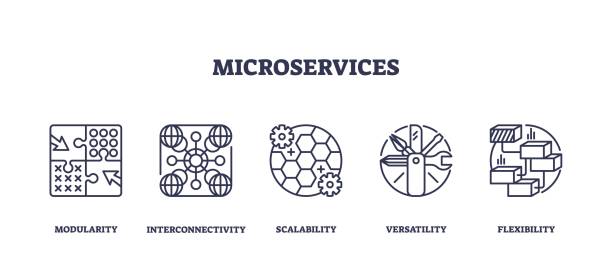
Docker and Kubernetes: The Dynamic Duo Simplifying Scalable Deployments
In the era of cloud-native computing, scalability isn’t a luxury. It’s a necessity. Yet, deploying and managing applications at scale was a labyrinth of manual configurations, inconsistent environments, and brittle infrastructure for years. Enter Docker and Kubernetes, two technologies that have revolutionized how teams build, ship, and scale applications. Together, they form a symbiotic ecosystem that abstracts complexity, automates workflows, and turns scalability from a headache into a repeatable science.
The Problem with Traditional Deployments
Before Docker and Kubernetes, deploying applications meant wrestling with “works on my machine” inconsistencies. Developers built software in bespoke local environments, only to face crashes in production due to mismatched dependencies or OS differences. Scaling required manual server provisioning, load balancer tweaks, and sleepless nights during traffic spikes. Downtime was frequent, rollbacks were perilous, and innovation slowed under the weight of operational debt.
Docker: Consistency as the Foundation
Docker introduced lightweight, portable containers that package code, runtime, libraries, and settings. Containers solve the “environment parity” problem by ensuring software runs identically across development, testing, and production.
- Isolation: Each container operates in its sandbox, eliminating dependency conflicts.
- Portability: Containers run seamlessly on any OS or cloud, from a developer’s laptop to AWS.
- Speed: Containers spin up in seconds, unlike bulky virtual machines.
For example, a Node.js app with Redis and PostgreSQL can be containerized into three separate units, each with pinned dependencies. This modularity simplifies updates—a database upgrade doesn’t require rewriting the entire stack.
Kubernetes: Orchestrating Chaos into Order
While Docker solves consistency, Kubernetes (K8s) tackles scalability. As a container orchestration platform, Kubernetes automates the’ deployment, scaling, and management of containerized applications.
- Self-Healing: Kubernetes restarts failed containers, replaces unresponsive nodes, and rolls out updates without downtime.
- Auto-Scaling: Define CPU or memory thresholds, and K8s spins up new containers during traffic surges, then scales down when demand drops.
- Load Balancing: Distributes traffic evenly across containers, preventing bottlenecks.
Imagine an e-commerce site during Black Friday. Kubernetes detects a spike in traffic to the product catalog service, auto-scales from 10 to 100 containers in minutes, and ensures checkout remains responsive. Post-sale, it scales back, optimizing costs.
How Docker and Kubernetes Work Together
- Build: Developers package apps into Docker containers, ensuring consistency.
- Ship: Containers are pushed to registries like Docker Hub or AWS ECR.
- Deploy: Kubernetes pulls containers and deploys them across clusters.
- Manage: K8s monitors health, scales resources, and rolls out updates.
This pipeline is codified in Infrastructure as Code (IaC), where YAML files define desired states. For instance, a deployment.yaml file specifies:
- Number of container replicas
- Resource limits (CPU/memory)
- Update strategies (rolling, blue-green)
Teams version controls these files, enabling repeatable, auditable deployments.
Security and Observability
Docker and Kubernetes don’t just scale—they secure.
- Docker Security: Tools like Docker Bench audit containers for vulnerabilities, while image signing ensures that only trusted code is deployed.
- Kubernetes Security: Role-Based Access Control (RBAC), network policies, and secrets management lock down clusters.
Monitoring is baked in:
- Prometheus scrapes metrics from K8s pods.
- Grafana visualizes performance data.
- Fluentd aggregates logs for troubleshooting.
Serverless and Edge Computing

Docker and Kubernetes are evolving. Kubernetes-native serverless (Knative) abstracts servers entirely, letting developers focus on code. Edge computing leverages lightweight K8s distributions (K3s) to deploy containers on IoT devices or 5G nodes, reducing latency for real-time apps.
Scalability as a Service
Docker and Kubernetes have democratized scalability. Startups now wield tools once reserved for tech giants, deploying global apps with a few CLI commands. Decoupling infrastructure from code lets teams focus on innovation, not firefighting. The future of scalable deployments isn’t just simpler; it’s autonomous.

Leave a Reply